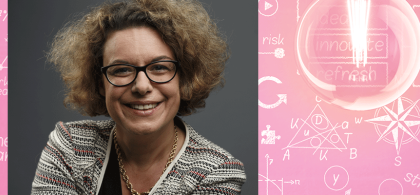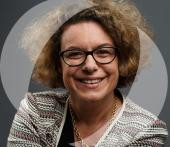
Balancing work and cancer: how employees' life stories can inspire their organisations
Published on 01/10/2025
Imagine if employers harnessed their employees’ lived experiences of cancer to enhance the workplace support given to colleagues during or after the illness. This is precisely the approach taken by NEOMA’s Rachel Beaujolin and Pascale Levet (IAE-Université Lyon 3), who carried out five years of action research across 25 companies and local public bodies. The researchers concluded that the careful use of employees' workplace life stories opens up promising pathways.
In France, 40% of people who are diagnosed with cancer every year are in employment at the time of the diagnosis – and many of them are keen to carry on working or get back to work as soon as possible. The French Health Authority (HAS) endorses this approach: it recommends that cancer patients should remain professionally active since working contributes to improved life expectancy.
Still, the question of “how” remains open: while work can be a powerful resource during the health journey, the challenge is to identify and engineer the right conditions for it. Existing legal mechanisms (including therapeutic part-time work, distance working, official recognition of a disability, etc.) are often too rigid to accommodate the uncertainties of balancing work and cancer: the pace and side effects of treatment, unpredictable and random bouts of fatigue, the risk of relapse, and so forth. And individual adjustments on a case-by-case basis disrupt the broader organisation of work.
A structured framework for company stakeholders
The researchers were keen to overcome these obstacles by drawing on an original source: the real-life experiences of people working during or after cancer. We already know that employees facing these challenges are extraordinarily resourceful in continuing to work or returning to the workplace, whether by finding new ways to adapt or by improvising long-term solutions.
This kind of experiential knowledge, however, is deeply personal, and even those who possess it struggle to put it into words. It takes shape through trial and error on the job and only becomes visible through meaningful dialogue. Moreover, even when someone is able to articulate this knowledge, it cannot be shared in “raw” form with other actors in an organisation: it is highly individual, too detailed and too intimate to be disclosed without a filter. The researchers needed to devise a way to express and share this knowledge, preserving its power and authenticity, while protecting individuals and the uniqueness of their circumstances.
The strategy, which was also trialled in private companies and public organisations, ran from 2019 to 2024. Its most significant contribution lies in having triggered or accelerated widespread awareness, including among the people most directly affected. This wake-up call led to a broader understanding that when an employee returns to work after a leave of absence, their environment and professional tools have inevitably moved on. Another key observation: if an occupational health doctor – or manager – approaches an employee’s return to work with excessive caution, it can give them the painful impression that they are still ill and not up to taking back control of their job.
A further consideration is that individual timetable adjustments need to factor in each employee’s workload and constraints so they are not excluded from meetings that are crucial to their work. If not implemented properly, the very arrangements that were designed to help may, on the contrary, leave the individual feeling they are a failure.
This action research, with its tangible outcomes, can be viewed as a methodological framework intended for use by the different stakeholders directly or indirectly involved in workplace health, including leaders, managers, staff representatives and occupational doctors.
From collecting raw life stories to sharing stylised narratives
The process began with gathering narratives about “life at work during or after cancer”, a mix of active listening, reframing and exploratory hypotheses designed to provide insight into specific situations. Participants described their successful, unsuccessful and aborted initiatives, together with the resources they had leveraged to good or little effect.
Even at this early stage, those involved were able to gauge for themselves how far they had come, begin engaging in self-reflection and, at times, identify adjustments more in keeping with their state of health. This phase also further demonstrated that some cases fit within existing legal provisions, but that others require creative “workarounds” that stretch the formal boundaries of the law to allow the person to remain in employment.
These raw life stories were subsequently reworked, anonymised and abbreviated to make them easier to share as part of a collaborative thought process. Initially, so-called “stylised” stories were produced by blending a number of raw stories addressing the same theme – the effectiveness and limits of therapeutic part-time work, for instance. These stylised narratives were then further simplified and abridged to focus on a single idea and zero in on the key points.
Successful pilot initiatives across a number of companies
Trials were carried out in parallel in the field. Four companies helped roll out and evaluate a new digital platform for their employees affected by cancer. This included stylised narratives, a self-reflection tool and an open workspace for documenting their thoughts and analyses.
Stylised narratives were also used in a local authority that was keen to upgrade its systems for supporting employees working with or after cancer. When management first introduced this new approach, it triggered widespread pushback from the relevant stakeholders, who insisted: “We already provide very good support”.
But as the groupwork based on these narratives developed, participants changed their point of view, even at times describing the experience as “initiatory” – i.e. serving as a catalyst for change – and suggesting organisational transformations to be tried out: flexible working hours, for example, and the option of distance working for employees returning part-time.
Individual, group and organisational learning dynamic
It is an approach, therefore, that goes well beyond simply raising awareness about cancer or tackling the taboo surrounding the illness. It translates employees' experiential knowledge into meaningful, shareable knowledge, leveraging the power of narrative mechanisms to mobilise all the leading players (managers, HR, occupational health doctors, staff representatives, colleagues, etc.) to take a new look at the issue and devise possible ways forward. Depending on the specific case, these new avenues may either complement and reinforce the legal frameworks or follow a different path.
The learning dynamic operates on individual, collective and even organisational levels, helping key stakeholders find their bearings and move forward within the highly specific context of balancing work and cancer, where no single solution has yet proven obvious, universal or definitive
Find out more
R. Beaujolin and P. Levet, Re-concevoir le travail avec/après un cancer - Enclencher une dynamique d’apprentissage organisationnel à l’appui de mécanismes narratifs, Revue Française de Gestion, January 2025. DOI:10.1684/rfg.2025.55
Related news
Professor

BEAUJOLIN Rachel
Rachel has been a professor in management and human resources since 2002. She received her PhD in Management Sciences (Ecole Polytechnique) in 1999 and her Habilitation to Supervise Research (IEA Paris - Sorbonne) in 2006. Her main areas of research are organizational transformations and employment


